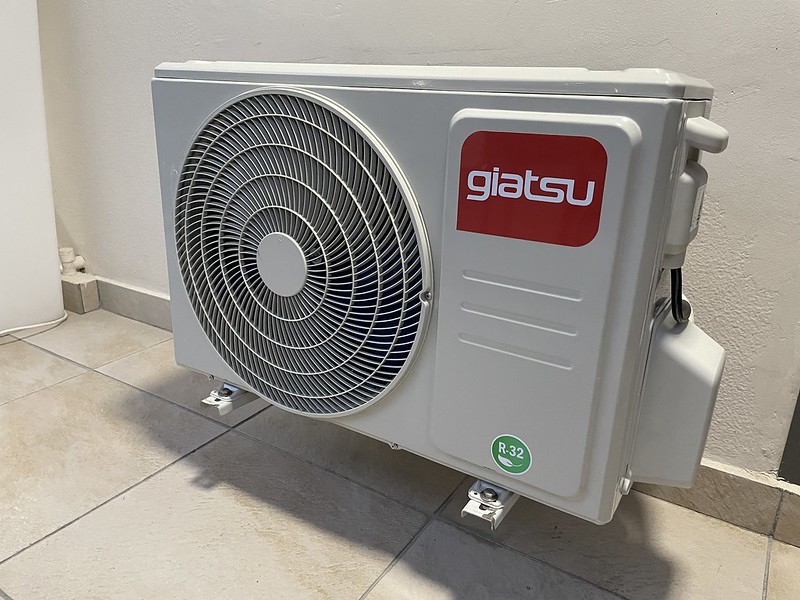Combining mini-splits with central HVAC is a viable option that can offer several advantages, such as energy savings, flexibility, and efficiency. However, it’s essential to understand the technical details and considerations involved in this process. This comprehensive guide will provide you with a step-by-step approach to successfully integrating mini-splits with your existing central HVAC system.
Understanding the Compatibility of Mini-Splits and Central HVAC
Mini-split systems and central HVAC systems have distinct components and operating principles, but they can be combined to create a hybrid system that leverages the benefits of both. The key compatibility factors to consider are:
-
Separate Condensers: Mini-splits have their own dedicated outdoor condensing unit, while central HVAC systems also have a separate condenser. This means that when combining the two, you’ll need to accommodate separate condensers for the upstairs and downstairs areas.
-
Refrigerant Lines: Mini-splits use refrigerant lines to transport heat between the indoor and outdoor units, while central HVAC systems have a different refrigerant distribution system. Careful planning is required to ensure the refrigerant lines are properly routed and connected.
-
Electrical Requirements: Mini-splits and central HVAC systems have different electrical requirements, so you’ll need to ensure that the electrical infrastructure can support the combined system.
-
Zoning and Temperature Control: Mini-splits excel at providing independent temperature control for different zones, while central HVAC systems typically have a single thermostat controlling the entire home. Integrating these two systems requires careful zoning and temperature management strategies.
Assessing Your Existing HVAC System
Before embarking on the integration process, it’s crucial to thoroughly assess your existing central HVAC system. This includes:
-
System Age and Condition: Evaluate the age and overall condition of your central HVAC system. If it’s nearing the end of its lifespan, it may be more cost-effective to replace the entire system rather than attempting to integrate mini-splits.
-
Ductwork Evaluation: Inspect the condition and layout of your home’s ductwork. Ensure that the ductwork is in good condition and can accommodate the additional airflow requirements of the mini-split system.
-
Electrical Capacity: Assess the electrical capacity of your home to ensure it can handle the additional load from the mini-split system. This may involve upgrading the electrical panel or adding dedicated circuits.
-
Zoning and Thermostat Compatibility: Evaluate your current zoning setup and thermostat compatibility to determine the best approach for integrating the mini-split system.
Designing the Hybrid HVAC System
Once you’ve assessed your existing HVAC system, it’s time to design the hybrid system that combines the mini-splits and central HVAC. This process involves:
-
Determining the Optimal Mini-Split Configuration: Carefully analyze the layout and heating/cooling requirements of your home to determine the appropriate number, size, and placement of the mini-split indoor units. The GREE Comfort System Builder tool can be a valuable resource in this process.
-
Integrating the Mini-Split Outdoor Unit: Plan the location and installation of the mini-split outdoor condensing unit, ensuring it’s compatible with the existing central HVAC condenser and that the refrigerant lines can be properly routed.
-
Coordinating the Ductwork Integration: Evaluate how the mini-split system’s airflow can be integrated with the existing ductwork to ensure efficient air distribution throughout the home.
-
Electrical Upgrades and Connections: Determine the necessary electrical upgrades, such as adding dedicated circuits or upgrading the electrical panel, to accommodate the combined HVAC system.
-
Thermostat and Zoning Integration: Develop a strategy for integrating the mini-split system’s temperature control with the existing central HVAC thermostat, ensuring seamless zoning and temperature management.
Installation and Commissioning
With the design phase complete, it’s time to move on to the installation and commissioning of the hybrid HVAC system. This step-by-step process includes:
-
Mini-Split Indoor Unit Installation: Carefully install the mini-split indoor units in the designated locations, ensuring proper mounting, refrigerant line connections, and electrical wiring.
-
Mini-Split Outdoor Unit Installation: Install the mini-split outdoor condensing unit, ensuring proper placement, refrigerant line connections, and electrical wiring.
-
Ductwork Integration: Integrate the mini-split system’s airflow with the existing ductwork, making any necessary modifications or additions to ensure efficient air distribution.
-
Electrical Upgrades and Connections: Perform the required electrical upgrades, such as adding dedicated circuits or upgrading the electrical panel, and connect the mini-split system to the home’s electrical infrastructure.
-
Thermostat and Zoning Integration: Integrate the mini-split system’s temperature control with the existing central HVAC thermostat, ensuring seamless zoning and temperature management.
-
System Commissioning and Testing: Thoroughly test the combined HVAC system to ensure proper operation, energy efficiency, and temperature control across all zones.
Maintenance and Ongoing Care
Maintaining the hybrid HVAC system is crucial to ensure its long-term performance and efficiency. This includes:
-
Regular Maintenance of Mini-Split Components: Perform regular maintenance on the mini-split indoor and outdoor units, such as cleaning filters, checking refrigerant levels, and inspecting electrical connections.
-
Central HVAC System Maintenance: Continue to maintain the central HVAC system, including the condenser, ductwork, and other components, to ensure optimal performance.
-
Thermostat and Zoning Adjustments: Monitor the thermostat and zoning settings, making adjustments as needed to maintain comfortable temperatures and energy efficiency.
-
Professional Servicing and Troubleshooting: Engage with a qualified HVAC professional for periodic servicing, maintenance, and any necessary troubleshooting or repairs.
By following this comprehensive guide, you can successfully combine mini-splits with your existing central HVAC system, leveraging the benefits of both technologies to create a highly efficient and flexible heating and cooling solution for your home.
References:
- Reddit Discussion on Combining Central Air and Mini-Splits
- Garage Journal Forum Thread on Replacing Central Air with Mini-Splits
- The AC Doctors: Combining Ductless Mini-Splits with Existing HVAC Infrastructure
- GREE Comfort: Adding Mini-Splits to an Existing HVAC System
- AC Comfort: Ductless AC with Central AC

